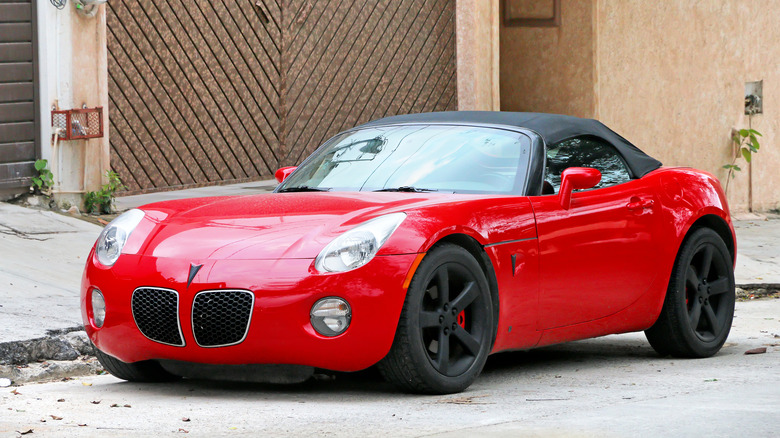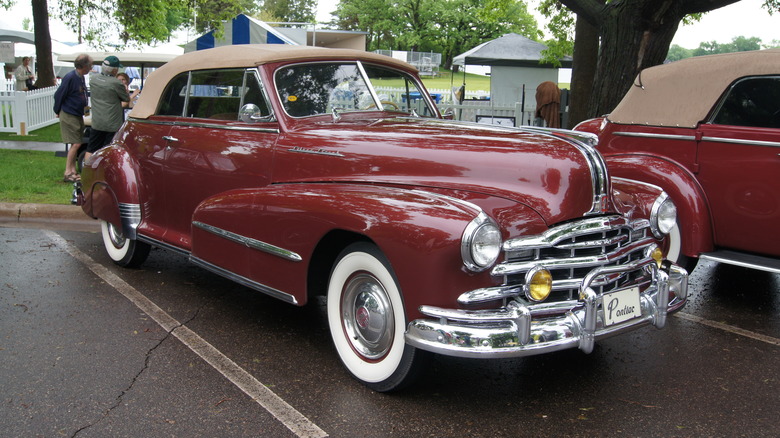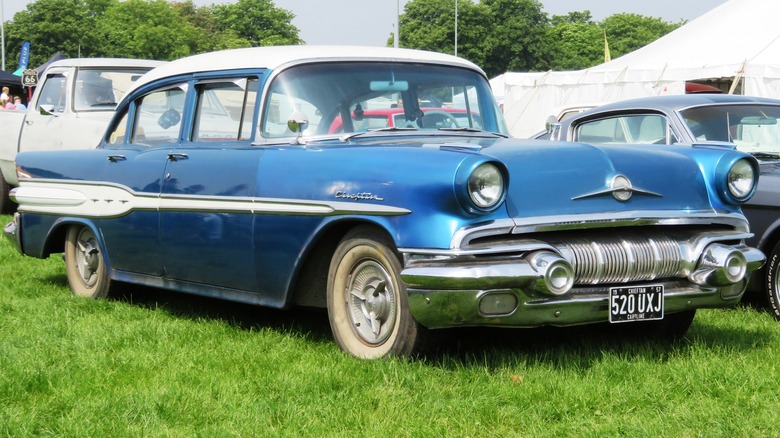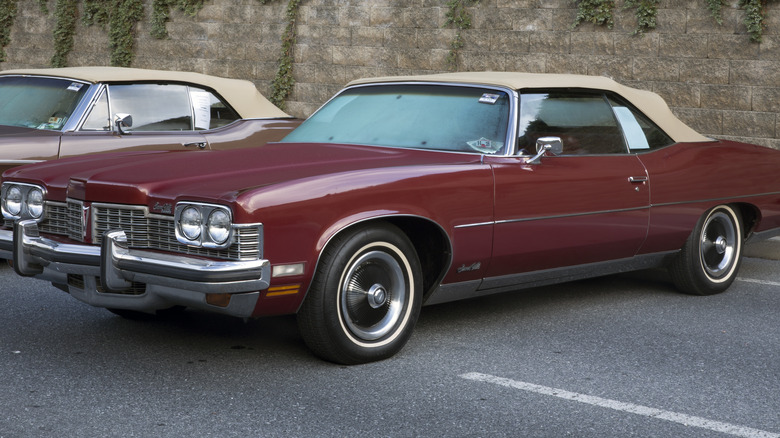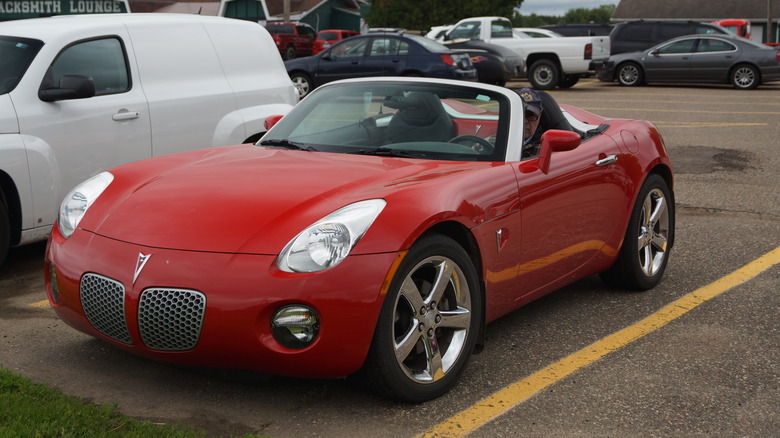4 Forgotten Pontiac Models That Deserve More Recognition
In roughly a year writing for SlashGear, I have penned more than 25,000 words worth of articles on the Pontiac brand, which was formed by General Motors in 1926 and dropped in 2010 as part of GM's bankruptcy reorganization. Most of my features have been on muscle car legends like the 1964 GTO or the equally important 1967 Firebird. Some of Pontiac's lesser-regarded models, like the much-maligned Aztek, have also been a focus of my research, giving me a solid background on the brand and its wide-ranging efforts over the years.
The memory of many Pontiac models has faded like the brand itself, overshadowed by Pontiac's other highlights like the Trans Am, Bonneville, and Grand Prix, which had its up and down years. Some of those obscure Pontiacs should be held in higher regard as standouts in terms of design, performance, or both. Let's shine our high beams on a few of those neglected classics from Pontiac's lineup.
The Torpedo was stylish and affordable
Pontiac launched the Torpedo in 1940 on the B-body platform, and during its run the model was also built using A and C body underpinnings. The Deluxe Torpedo was the A-body version, the Streamliner Torpedo was the B-body, and the Torpedo Custom utilized the C-body structure. The high-end Torpedo had the rounded, chrome-heavy styling typical of its era, and remained in production through 1948. Pontiac built about 330,000 1941 Torpedos, more than a third of which had the optional 249 cubic inch straight eight engine. Only about 25,000 of those were C-body Custom Torpedos, most of which were equipped with the optional eight cylinder, 103 horsepower engine.
Production of the Torpedo was paused for World War II along with the rest of Pontiac's lineup, and the 1946 model ranged in price from $1,300 for the coupe to $1,630 for the convertible (about $22,000 to $28,000 in 2024 dollars). The Torpedo's period-representative design made it popular with Hollywood producers, earning it a role in film classics like The Accused, All About Eve, and Coal Miner's Daughter.
[Featured image by Greg Gjerdingen via Wikimedia Commons|Cropped and scaled|CC-By 2.0]
The Chieftain was suprisingly powerful
The Chieftain lived through three generations from 1949 through 1958, replacing the Torpedo and giving way to the Catalina. For the first major update in 1955, Chieftains got one of a few variants of Pontiac's new V8 that made as much as 193 horsepower. The 347 cubic inch engine in the 1957 Chieftain could put out as much as 317 horsepower when topped with Pontiac's three-carburetor array. With this NASCAR-inspired setup, the 3,840 pound Chieftain could hustle from 0-60 in 8.2 seconds and cover a quarter mile in about 16 seconds flat.
These numbers might not seem impressive by modern standards, but compared favorably to the 1957 Ford Thunderbird's benchmarks of 9.9 and 17 seconds. Pontiac brought back the convertible body style for the Chieftain's swan song in 1958, adding a couple of design flourishes for good measure. As part of Pontiac's move away from Native American iconography for its cars, the Chieftain yielded to the Catalina that year.
[Featured image by Charles01 via Wikimedia Commons|Cropped and scaled|CC-By 4.0]
The Grand Ville was a victim of unfortunate timing
Pontiac introduced the Grand Ville in 1971, bumping the Bonneville from the premium slot in the brand's lineup, a spot it had held since 1958. The Bonneville stayed in production, replacing the Executive as Pontiac's second-fiddle offering. The Grand Ville had high-end touches like plush carpeting and velour seats and options like power seats, cruise control, and a tape deck. The emphasis wasn't solely on gadgetry and comfort, though. A 455 cubic inch V8 was standard equipment until 1975, when it became an upgrade over a 400-inch version. The Grand Ville was a dealership darling through 1973, when the oil crisis made its sub-10 mile per gallon average fuel economy less enticing to buyers.
The Grand Ville's peak year was 1972, with about 60,000 units coming off the line, about a third of which were convertibles. For its final year in 1975, The Grand Ville was renamed the Grand Ville Brougham and production of about 13,000 units was a tiny slice of Pontiac's overall output. Only about 4,500 of those final year Grand Villes were convertibles, and Pontiac wouldn't make another drop-top model until 1983.
[Featured image by Mr. Choppers via Wikimedia Commons|Cropped and scaled|CC-By 3.0]
The Solstice also came around at the wrong time
While the Grand Ville was a behemoth that arrived just as American car buyers had to shift their focus to more economical choices, the Solstice came along as the Pontiac division was taking its final breaths. The Solstice was unveiled as a concept at the 2002 Detroit Auto Show and went into production for the 2006 model year. A companion model, the Saturn Sky, followed the next year. Both models lasted until their respective brands were dropped by GM in 2010, with limited pre-production runs that final year. For 2007, Pontiac made a GXP version of the Solstice, which featured a 2.0 liter four-cylinder engine that produced 260 horsepower and 260 pound-feet of torque.
In a car that weighed less than 3,000 pounds, that was enough power to get the 2007 Solstice GXP from 0-60 in a very impressive 5.3 seconds. That's almost equal to the performance of that year's Ford Mustang GT, which cost over $30,000 in convertible form vs. the Solstice GXP's sticker price of $25,995.
[Featured image by Greg Gjerdingen via Wikimedia Commons|Cropped and scaled|CC-By 2.0]
